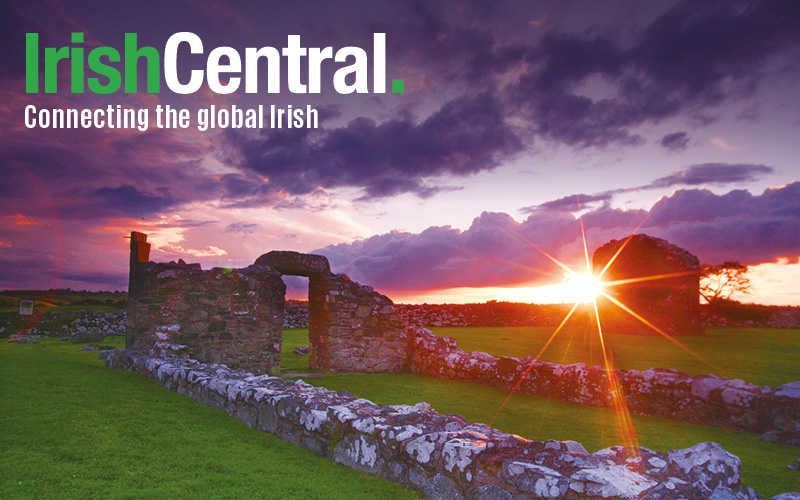Seven years ago, an English couple paid $36 for a print at a yard sale in Lincolnshire, East England. It wasn’t until a recent Irish Times article about the painting the print depicts, that the couple became aware of the enormous historical and financial value of what lay in their home.
The print depicts the famous World War One painting by Fortunino Matania, “The Last General Absolution of the Munsters at Rue du Bois,” one the most poignant events in the history of Irish involvement in the war. Not only this, but the print is inscribed by the chaplain who appears in the painting.
The painting shows a Catholic chaplain from Co. Tipperary, Fr. Francis Gleeson, on horseback before soldiers of the Second Battalion, Royal Munster Fusiliers in Northern France, almost 100 years ago in May 1915. The men, led by Lieut-Col Victor Rickard (also depicted on horseback in the painting), are receiving “general absolution” on the eve of battle as they stopped by a shrine outside of the northwestern French town, Rue du Bois, on May 8 1915. Many of these men were to die the following day, including Rickard.
This particular print is inscribed with a greeting to an unknown receiver by Fr. Francis Gleeson and dated April 7, 1919, after the end of the war. Fr. Gleeson, from Templemore, Co. Tipperary, volunteered as a Catholic chaplain in the British army on the outbreak of the war. He served with distinction with the Royal Munster Fusiliers before returning to Ireland and serving as a priest in Dublin until his death in 1959.
Prints of the painting were very popular after it was first used in “The Sphere” magazine in London in November 1916. Although there are other copies in private collections and in museums in Ireland, this is the only known print to include an inscription by Fr. Gleeson. The original painting is thought to be lost.
Upon learning of the potential value, the English couple consigned the print and it will now go up for auction with Whyte’s auctioneers in Dublin next month. The print is expected to sell for between $3,200 and $5,300.
Just last year, the vestment worn by Fr. Gleeson in the painting was also discovered in storage in a museum in London. Gleeson’s bravery during the war is renowned as he comforted members of the Royal Munster Fusiliers.
An entry from the eve of the battle in his diary, which is housed in the Dublin Diocesan Archives, reads, “The scenes of enthusiasm are extraordinary. I ride on my horse. Give absolution to [the] battalion during rest in [the] road...The men all sing hymns, ‘Hail Glorious St Patrick’. I go further up — near the trenches, and bid goodbye to all. So sad.”
The following day, he writes, “What a day for all the Munsters. We lose at least 350 men, between killed and wounded and missing. Spent all night trying to console, aid, and remove the wounded. It was ghastly to see them lying there in the cold, cheerless outhouses, on bare stretchers with no blankets to cover their freezing limbs... Hundreds lying out in cold air all night at Windy Corner. No ambulances coming. They came at last — at daylight.”




Comments